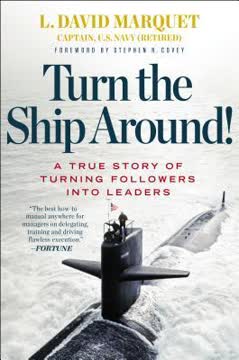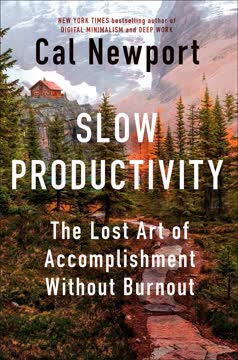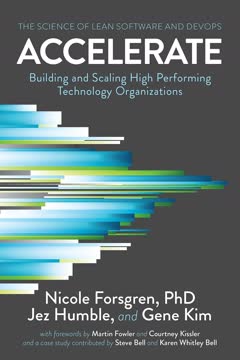重点摘要
1. 总动机(ToMo)通过适应性行为驱动高绩效
“你无法逃避它。如果仅仅一分钟的准备就能提升Steve和他团队的表现,想象一下一个系统性设计来最大化每个人在每个层级的表现的文化会带来什么样的影响。”
ToMo是成功的关键。 它是基于六个关键因素衡量个人或组织动机的指标:乐趣、目的、潜力、情感压力、经济压力和惯性。高ToMo会导致适应性表现的增加,这在当今快速变化的商业环境中至关重要。
ToMo影响绩效的各个方面:
- 创造力和创新
- 解决问题的能力
- 坚持和韧性
- 客户满意度
- 员工保留率
拥有高ToMo的组织,如西南航空和全食超市,在客户满意度、员工参与度和财务业绩方面始终优于竞争对手。
2. 乐趣、目的和潜力是提升绩效的直接动机
“乐趣促使你从事爱好,从解字谜到制作剪贴簿再到混音音乐。”
直接动机激发内在动机。 这些动机直接与工作本身相关,导致更高的绩效和工作满意度。
- 乐趣:因工作本身而享受,发现任务中的好奇心和实验性
- 目的:相信所做工作的影响和价值
- 潜力:看到工作如何促进个人成长和未来目标
像谷歌和3M这样的公司通过允许员工花部分时间在自我导向的项目上来利用乐趣。像美敦力这样有强大使命的组织通过将员工与他们帮助的患者直接联系起来来激发目的。潜力通过健全的职业发展计划和指导机会得以利用。
3. 情感压力、经济压力和惯性是阻碍绩效的间接动机
“当你的工作动机是情感压力时,你的表现往往会受到影响。”
间接动机可能是有害的。 这些动机与工作本身无关,往往导致绩效、创造力和工作满意度的下降。
- 情感压力:因恐惧、内疚或羞耻而工作
- 经济压力:仅为奖励或避免惩罚而工作
- 惯性:在没有明确理由或动机的情况下继续工作
有害的间接动机的例子包括:
- 过度竞争的绩效排名系统(如微软以前的堆栈排名系统)
- 纯佣金制的销售结构
- 阻碍创新的僵化官僚工作环境
为了提高绩效,组织应专注于减少这些间接动机,同时增强直接动机。
4. ToMo因子衡量和预测组织文化的强度
“总动机因子是*终的文化建设工具,是你一直需要的指南针,以确保你的文化朝着正确的方向前进。”
现在可以衡量文化了。 ToMo因子提供了一个量化的组织文化强度的指标,使领导者能够识别改进领域并随时间跟踪进展。
ToMo因子的关键方面:
- 使用简单的调查测量六个动机
- 范围从-100到100,分数越高表示文化越强
- 与各种绩效指标强相关
通过定期测量和分析ToMo,组织可以:
- 识别文化的强项和弱项
- 制定有针对性的干预措施以改善文化
- 随时间跟踪文化举措的影响
- 比较团队、部门或竞争对手的绩效
5. 适应性绩效在动荡环境中对组织成功至关重要
“适应性组织是真正为胜利而建。”
适应性是生存的关键。 在当今快速变化的商业环境中,组织必须平衡战术绩效(执行现有计划)和适应性绩效(应对意外挑战和机会)。
适应性组织的特征:
- 鼓励实验和从失败中学习
- 促进开放的沟通和想法分享
- 授权员工做出决策
- 定期重新评估和调整策略
适应性绩效的例子:
- 西南航空在行业波动中保持盈利能力
- 丰田的持续改进理念(kaizen)
- W.L. Gore的创新、扁平化组织结构
优先考虑适应性的组织更能应对不确定性并抓住新兴机会。
6. 领导行为显著影响员工ToMo和绩效
“通过将前面提到的十四种火种行为转化为一个简单、易于实施的例行程序,你可以将所有十四种火种行为整合到一个简单、易于实施的例行程序中。”
领导者塑造文化。 领导者的行为和态度对员工的动机和绩效有深远影响。高ToMo的“火种”领导者表现出特定行为,增强直接动机并*小化间接动机。
提升ToMo的关键领导行为:
- 提供自主权并鼓励实验
- 将工作与更大的目的或使命联系起来
- 提供成长和发展的机会
- 减少对失败的恐惧并鼓励冒险
- 认可和庆祝成就
组织可以通过有针对性的培训计划、指导以及在领导选择和评估过程中纳入ToMo原则来培养高ToMo的领导者。
7. 精心设计的角色和职业阶梯提升ToMo和适应性绩效
“设计一个战术绩效的工作相对简单。我们知道如何将战略转化为流程,并将该流程转化为职位描述。设计一个支持适应性绩效和总动机的工作要困难得多。”
角色设计很重要。 工作的结构和职业路径的设计对员工的动机和绩效有重大影响。精心设计的角色提供乐趣、目的和潜力的机会,同时*小化间接动机。
有效角色设计的要素:
- 工作与影响的明确联系(影响理论)
- 实验和学习的机会
- 决策自主权
- 定期反馈和反思
职业阶梯的*佳实践:
- 提供多条晋升路径(如技术、管理、客户导向)
- 明确定义每个级别的技能和期望
- 在每个阶段提供成长和学习的机会
- 通过增加ToMo(不仅仅是补偿)来奖励进步
8. 补偿系统必须平衡战术和适应性绩效激励
“像所有激励因素一样,绩效薪酬本身既不是好也不是坏。根据情况,它可以是好、坏或两者兼而有之。”
补偿是复杂的。 虽然传统的绩效薪酬系统可以提升短期战术绩效,但它们往往会破坏适应性绩效和长期成功。组织必须设计平衡两种绩效并与ToMo原则一致的补偿系统。
有效补偿系统的考虑因素:
- 奖励个人和团队绩效
- 纳入适应性绩效的衡量标准(如创新、解决问题)
- 避免产生反效果或“眼镜蛇效应”
- 确保公平和透明
创新补偿方法的例子:
- 全食超市的团队奖金系统
- REI专注于利润分享而非个人奖金
- Buffer的透明薪资公式
9. 建立高ToMo文化需要系统的、基于科学的方法
“《激发表现》向你展示了如何建立真正伟大的文化。”
文化建设是一门科学。 创建和维护高ToMo文化需要基于科学原则的系统方法。组织必须有意设计和管理文化的各个方面,以*大化适应性绩效。
系统文化建设方法的关键要素:
- 定期测量和跟踪ToMo
- 将所有组织系统(如招聘、绩效管理、补偿)与ToMo原则对齐
- 在各级培训领导者ToMo概念和行为
- 创建专门的“火种观察者”团队来监督文化举措
- 不断实验和完善文化实践
通过采用科学、数据驱动的文化方法,组织可以创建可持续的高绩效环境,在变化面前适应和繁荣。
最后更新日期:
FAQ
What's Primed to Perform about?
- Focus on Culture: Primed to Perform by Neel Doshi and Lindsay McGregor explores building high-performing cultures through the science of total motivation (ToMo).
- Total Motivation Concept: It introduces ToMo, which includes six motives that drive performance: play, purpose, potential (direct motives) and emotional pressure, economic pressure, inertia (indirect motives).
- Practical Framework: The book provides a framework for leaders to assess and improve organizational culture, ensuring employees are motivated to perform at their best.
Why should I read Primed to Perform?
- Evidence-Based Insights: The book is grounded in two decades of research, offering reliable and actionable insights.
- Transformative Tools: It provides practical tools and methods for leaders to create and sustain high-performing cultures.
- Addressing Challenges: The book tackles common cultural challenges, offering strategies to foster adaptability and innovation.
What are the key takeaways of Primed to Perform?
- Importance of Culture: Culture is a critical driver of performance, and actively managing it can lead to success.
- Direct vs. Indirect Motives: Understanding the difference between direct and indirect motives is essential for enhancing performance.
- Total Motivation Factor: The ToMo factor is a measurable concept that helps assess cultural health and identify improvement areas.
What is the Total Motivation Factor (ToMo) in Primed to Perform?
- Measurement Tool: ToMo quantifies the balance of direct and indirect motives within an organization, ranging from -100 to 100.
- Predictive of Performance: A higher ToMo score correlates with better adaptive performance, indicating higher creativity and engagement.
- Calculation Method: Organizations can use a survey to assess employees' feelings about the six motives, identifying cultural strengths and weaknesses.
How does Primed to Perform define direct and indirect motives?
- Direct Motives: Include play (enjoyment), purpose (valuing outcomes), and potential (personal growth), enhancing performance.
- Indirect Motives: Consist of emotional pressure, economic pressure, and inertia, which typically reduce performance.
- Impact on Performance: Organizations should focus on enhancing direct motives while minimizing indirect ones for a thriving culture.
How can I apply the concepts from Primed to Perform in my organization?
- Conduct a ToMo Survey: Measure the total motivation factor to understand your current cultural health.
- Identify Improvement Areas: Analyze survey results to pinpoint lacking motives and focus areas like leadership or role design.
- Set Aspirational Goals: Establish clear goals for improving ToMo and develop a plan to achieve them.
What leadership behaviors are essential for creating a high-ToMo culture according to Primed to Perform?
- Encouraging Play: Inspire curiosity and experimentation by providing time and space for creative thinking.
- Fostering Purpose: Help employees see the importance of their work, aligning individual goals with the organization’s mission.
- Supporting Potential: Link employees’ work to personal goals and provide growth opportunities, making them feel valued.
What is the importance of role design in Primed to Perform?
- Role Design's Impact: Effective role design maximizes total motivation and adaptive performance.
- Creating a Playground: Encourage exploration and learning from failures, fostering creativity and innovation.
- Clarity in Roles: Clear role definitions help employees understand responsibilities and exercise autonomy.
How does Primed to Perform suggest organizations can avoid the blame bias?
- Assume Positive Intent: Start by assuming employees have good intentions, reducing the tendency to blame.
- Focus on Context: Examine the context of performance issues, looking for systemic problems rather than individual faults.
- Use the REAP Model: Employ the REAP model (Remember, Explain, Ask, Plan) for constructive feedback and root cause identification.
What role does identity play in building a high-performing culture according to Primed to Perform?
- Foundation of Purpose: An organization’s identity provides purpose and direction, enhancing the purpose motive.
- Behavioral Code: A strong identity includes a behavioral code for decision-making and problem-solving.
- Heritage and Traditions: Celebrating heritage and establishing traditions create a sense of belonging and shared values.
What are some examples of companies that successfully implemented ToMo principles from Primed to Perform?
- Whole Foods Market: Empowers employees to make decisions, fostering a sense of purpose and ownership.
- Toyota: Uses the andon cord system to promote experimentation and continuous improvement.
- Starbucks: Balances tactical and adaptive performance, emphasizing training and customer engagement.
What are the best quotes from Primed to Perform and what do they mean?
- “Taylorism has had its day.”: Suggests traditional management practices are outdated, advocating for adaptability and engagement.
- “Every single job should have this cycle designed right into the job itself.”: Emphasizes integrating the performance cycle into job design for continuous learning.
- “You are our fire watchers, who make sure the fire does not go out.”: Highlights the role of culture champions in maintaining a high-performing culture.
评论
《激发卓越表现》获得了大多数正面评价,平均评分为4.15/5。读者称赞其对职场文化、动机和绩效的见解。许多人认为ToMo(总动机)模型特别有用。该书的优点包括其科学方法、实用工具和案例研究。一些读者指出,中后部分不如第一部分吸引人。少数人批评其重复性和学术写作风格。总体而言,评论者推荐该书给希望提升团队绩效和文化的领导者和管理者。
Similar Books














